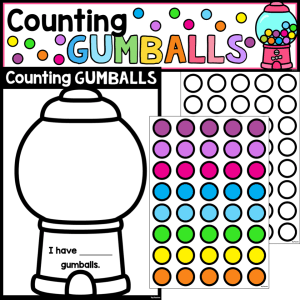Description
Are your students learning to count large sets of numbers by applying strategies such as skip counting or grouping? Grouping Hungry Ants: Skip Counting Strategy Worksheets is the perfect resource to help them practise these skills in a structured and meaningful way. This hands-on worksheet set is inspired by the classic picture book One Hundred Hungry Ants by Elinor J. Pinczes, making it a fantastic cross-curricular link between literature and mathematics.
Students will explore different ways to group ants to reach a total of 100 or 20, depending on the version used. Through visual representations and recording structured groups, students reinforce skip counting patterns, understand equal groups, and practise repeated addition. The tasks provide a strong foundation for developing multiplicative thinking.
Grouping Hungry Ants is ideal for use after a shared reading session, as part of your skip counting lessons, or during numeracy rotations. With options for differentiation and engaging ant-themed visuals, this low-prep resource will bring grouping strategies to life in your classroom.
Key Learning Outcomes:
- ✅ Practise skip counting by 2s, 5s, 10s and other multiples
- ✅ Use grouping strategies to count large sets efficiently
- ✅ Represent numbers visually and numerically
- ✅ Develop early multiplicative thinking through repeated addition
- ✅ Strengthen connections between counting strategies and number patterns
What’s Included:
- Grouping worksheets for 100 ants and 20 ants
- Visual ant-themed recording templates
- Skip counting prompts and scaffolded layout
- Teacher tips and suggested ways to use with the book
Materials Needed:
- Printed worksheets
- Pencils or coloured markers for grouping and counting
- Optional: copies of One Hundred Hungry Ants for shared reading
- Optional: counters or manipulatives for hands-on grouping before recording
How to Use:
- Read or revisit the story One Hundred Hungry Ants to introduce the concept of grouping.
- Discuss how the ants in the story tried different group sizes to reach the picnic faster.
- Choose the worksheet version based on student level (20 ants or 100 ants).
- Students use skip counting or repeated addition to group the ants in different ways.
- They record their groupings using the visual templates and number sentences provided.
- Encourage sharing strategies and discussing efficient ways to group.
Ideas for Classroom Use:
- 💡 Use after reading the book as a maths follow-up activity.
- 💡 Include in your skip counting or early multiplication unit.
- 💡 Set up as a numeracy rotation with small group support.
- 💡 Challenge fast finishers to find all possible grouping combinations.
- 💡 Create a class display showing how students grouped their ants in different ways.
Top Teacher Tips:
- 💛 Start with hands-on manipulatives to model grouping before moving to worksheets.
- 💛 Use the 20 ant version as an introduction, and the 100 ant version for extension.
- 💛 Encourage students to explain their thinking verbally or in writing for reasoning practice.
- 💛 Link to repeated addition and early arrays for bridging into multiplication concepts.
Grouping Hungry Ants is an engaging and flexible resource that makes skip counting strategies meaningful through storytelling, visual structure and mathematical thinking. A fun and effective way to build number confidence!
Additional information
| Number of Pages | 11 |
|---|---|
| File Format | |
| Australian Curriculum Code | AC9M1N02, AC9M1N03, AC9M1N06, AC9M2N05, AC9M2N06 |
Related Products
Australian Curriculum V9
F - 6
Lorem ipsum dolor sit amet, consectetur adipiscing elit.
Lorem ipsum dolor sit amet, consectetur adipiscing elit.
Lorem ipsum/ Lorem ipsum/ Lorem ipsum
Lorem ipsum dolor sit amet, consectetur adipiscing elit.
Lorem ipsum dolor sit amet, consectetur adipiscing elit.
Lorem ipsum/ Lorem ipsum/ Lorem ipsum
Lorem ipsum dolor sit amet, consectetur adipiscing elit.
Lorem ipsum dolor sit amet, consectetur adipiscing elit.
Lorem ipsum/ Lorem ipsum/ Lorem ipsum
Lorem ipsum dolor sit amet, consectetur adipiscing elit.
Lorem ipsum dolor sit amet, consectetur adipiscing elit.
Lorem ipsum/ Lorem ipsum/ Lorem ipsum
Lorem ipsum dolor sit amet, consectetur adipiscing elit.
Lorem ipsum dolor sit amet, consectetur adipiscing elit.
Lorem ipsum/ Lorem ipsum/ Lorem ipsum

